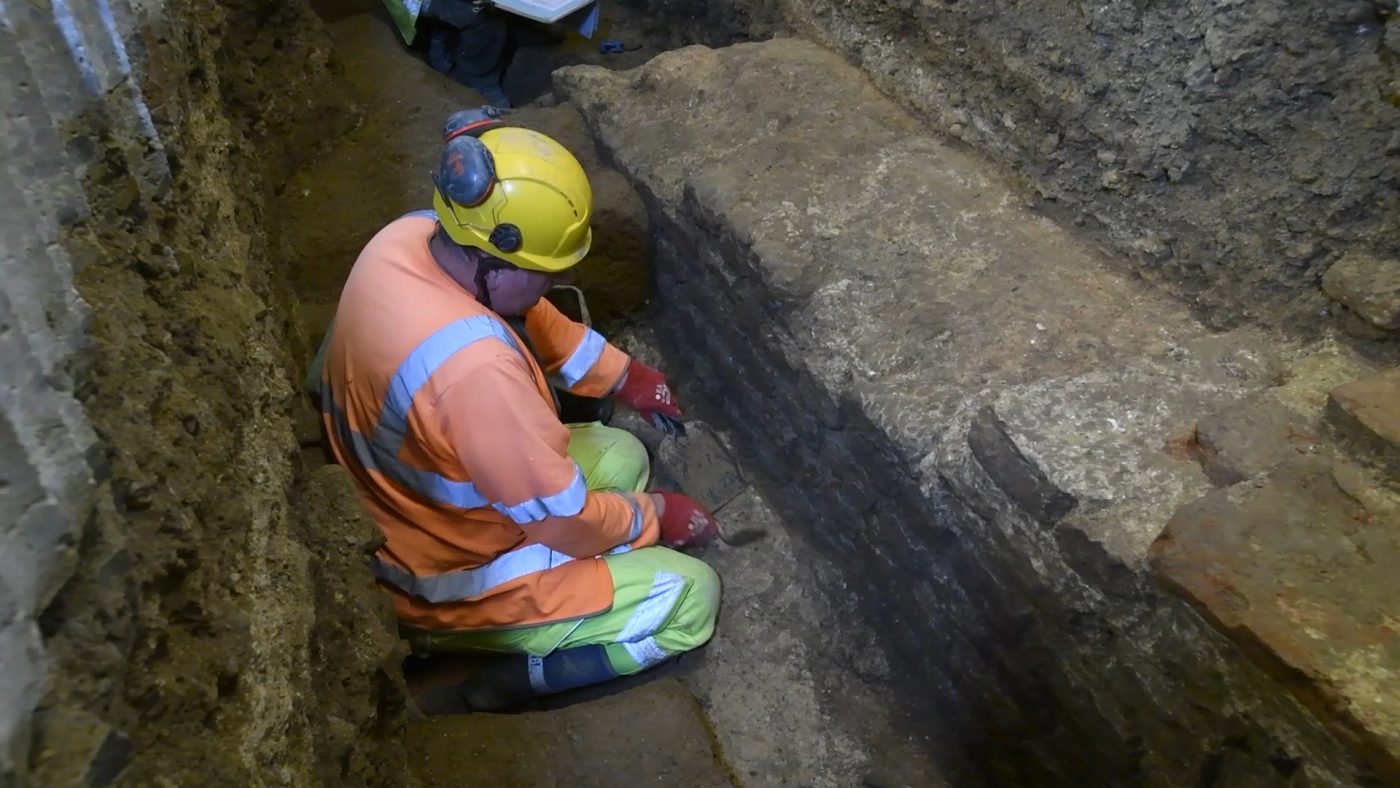

An archaeologist is observed in a video screenshot taken during an excavation in the basement of a building located on Gracechurch Street in London’s financial district.
MOLA
hide caption
toggle caption
MOLA
In a remarkable archaeological find, experts in London have uncovered a segment of Roman masonry that dates back nearly 2,000 years, believed to belong to an ancient town hall. Historians suggest this discovery is among the most significant in the city since the unveiling of an ancient amphitheater in the 1980s.
As developers planned to demolish a nearly century-old commercial structure situated in the heart of London’s financial district—officially known as the City of London or “Square Mile”—they collaborated with experts from the Museum of London Archaeology. Together, they unveiled extensive masonry that was part of a basilica adjacent to the Roman forum of the settlement known as Londinium, which flourished for several centuries before its decline about 1,600 years ago. Due to concerns for heritage, archaeologists were involved in this project, fully aware of the area’s historical significance.
Within the basement of the commercial property on Gracechurch Street, surrounded by towering structures filled with insurance and financial firms, archaeological excavations commenced two years ago. These investigations revealed towering stone walls, several feet thick and spanning dozens of feet in length.
According to Sophie Jackson, director of developer services at the Museum of London Archaeology, “In one of the trenches, we uncovered a massive segment of masonry—approximately three or four feet wide. We extended the excavation, and it continued to extend. Essentially, we unearthed a significant piece of Roman wall, representing part of the structure for the nave of this basilica, the central section of the town hall.”
Jackson explains that the basilica was a vital part of any substantial Roman settlement during that time, akin to an amphitheater, public baths, or protective walls surrounding them. “It’s the center of any important Roman town,” she states. “This is where the administrative functions are, where law courts operate, where magistrates preside—this is where crucial decisions take place. It also serves as a hub where merchants conduct business.”
What Jackson and her colleagues find particularly remarkable about this discovery is that the site has continuously served as a commercial center for centuries, undergoing extensive redevelopment since the Middle Ages.
Jane Sidell, principal inspector for ancient monuments at Historic England, notes, “For such a historically significant structure to endure extensive development over numerous centuries is truly extraordinary.” Sidell also expresses excitement over the commitment made by the new building’s developer, Hertshten Properties Limited, to exhibit some of the archaeological findings to the public. This mirrors similar undertakings, like that of Michael Bloomberg, who allowed the public to view a Roman temple uncovered beneath his company’s headquarters in London. This approach reflects a historically-conscious development trend that she feels has been absent during London’s rapid growth in the 20th century.
“Reading about history or watching a film like Gladiator is one thing, but experiencing something tangible from nearly 2,000 years ago is a completely different connection,” explains Sidell.

Artistic representation of a Roman forum complex
MOLA
hide caption
toggle caption
MOLA
The basilica is believed to have been constructed around 80 C.E. The archaeological team identified it on a site known to have been part of London’s forum area since the 19th century, when significant discoveries facilitated a preliminary understanding of the ancient Roman town center.
When the basilica was built, Londinium’s status as a major settlement was recently jeopardized due to a revolt against Roman authority that led to its sacking. However, with an estimated population of around 40,000, the decision to construct a large basilica, nearly 40 feet in height, indicated a renewed confidence in the city’s prospects.
“It was an impressive structure, unlike anything anyone in Britain had seen before,” Jackson remarks. “It was designed to captivate and perhaps intimidate the local residents.”









